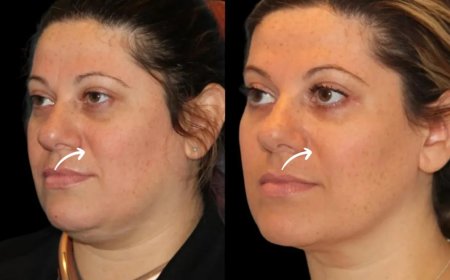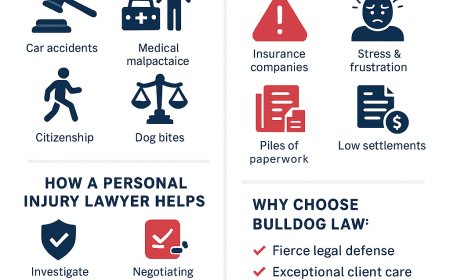Everything You Need to Know About Motorcycle Insurance Deductibles
When it comes to motorcycle insurance, one of the most confusing terms people run into is deductible. It sounds like something small, but in reality, it can have a big impact on how much you payand when. Whether you're getting motorcycle insurance for the first time or just trying to better understand your current policy, knowing how deductibles work can help you make smarter decisions. This post breaks it all down in simple terms. No jargon. No fluff. Just the factsso you can ride with confidence.
What Is a Motorcycle Insurance Deductible?
A deductible is the amount of money you agree to pay out of your own pocket before your motorcycle insurance kicks in to cover the rest. It's a shared cost between you and the insurance company. For example, if you have a $500 deductible and you make a claim for $2,000 in damage, youll pay the first $500. Your insurance covers the remaining $1,500.
This setup is standard across most types of insurance, but in motorcycle insurance, its especially important. Why? Because bikes are more vulnerable than cars. Theyre easier to damage, more likely to be stolen, and they usually cost more to fix relative to their size. So every penny counts when youre filing a claim.
How Do Deductibles Affect Your Premium?
Heres the trade-off: the higher your deductible, the lower your insurance premium. And vice versa. A deductible is one of the easiest ways to control how much you pay each month.
Think of it this way: by agreeing to cover more of the cost in case something happens, youre reducing the financial risk for the insurance company. In return, they give you a break on your premium.
So if you rarely ride, have a great safety record, or keep your motorcycle in a secure location, a higher deductible could save you money. But if you ride daily or park in a public lot, you might want a lower deductible for peace of mind.
Types of Motorcycle Insurance Coverage That May Have Deductibles
Not every part of your motorcycle insurance includes a deductible. Some coverages do, and some dont. Heres what usually does:
Collision Coverage
This pays for damage to your motorcycle after a crash, regardless of who was at fault. It almost always comes with a deductible. So if you slide out on a wet road and need a new front wheel, your deductible applies before the insurer pays out.
Comprehensive Coverage
This covers damage not caused by a collisionlike theft, vandalism, fire, or natural disasters. It also includes a deductible. If someone steals your bike or a tree falls on it during a storm, youll have to pay your share before the insurance helps.
Uninsured/Underinsured Motorist Property Damage (UMPD)
This isnt offered everywhere, but when it is, there may be a deductible involved. It protects you if someone crashes into your bike and they dont have insuranceor not enough of it.
Choosing the Right Deductible: What to Consider
Choosing the right motorcycle insurance deductible isnt just about picking a number. Its about knowing yourself, your bike, and your budget.
Your Financial Situation
Could you comfortably pay a $1,000 deductible tomorrow if you had to? If not, you might want to choose something lowerlike $250 or $500. Itll mean higher monthly premiums, but less financial stress when something goes wrong.
The Value of Your Motorcycle
Older bikes or bikes with a low resale value might not even be worth fixing after certain types of damage. In those cases, a high deductible may not make sense. On the other hand, if youre riding a brand-new sports bike, you might want low deductibles to protect your investment.
Risk Factors
Where you live and how you ride matter. Urban areas have more traffic, theft, and accidents. Long daily commutes increase the chances of wear and tear or collisions. If your riding conditions increase the chances of an accident or claim, consider a lower deductible.
How to Find the Deductible in Your Policy
Sometimes, deductibles are hidden in the fine print of a policy. Dont skip over this part. Ask your insurer directly if you're unsure. Look for a section that lists your coverages, and youll usually see a dollar amount next to each one. Thats your deductible.
Also, double-check whether different deductibles apply to different coverages. Its common to have a $500 deductible for collision and $250 for comprehensive. Knowing this helps you avoid surprises when making a claim.
When You Pay the Deductible
Its a common misconception that you pay the deductible to the insurance company. Not quite. You usually pay it directly to the repair shop when getting your bike fixedor the amount is simply deducted from the payout the insurer gives you.
For example, if your motorcycle repair costs $1,000 and you have a $500 deductible, the insurance company will pay the shop $500, and youll cover the rest.
How to Save Money Without Risking Too Much
If you want to keep your motorcycle insurance affordable but still be protected, consider these tips:
-
Bundle your policies. Combine motorcycle insurance with your auto or home insurance to get a multi-policy discount.
-
Increase your deductible gradually. Try bumping it up by $100 or $250 and see how much you save. If the monthly difference isnt huge, it might not be worth it.
-
Maintain a clean riding record. The fewer claims you make, the more discounts you can qualify forand youll have less reason to worry about deductibles.
-
Ask about disappearing deductibles. Some insurers offer a feature where your deductible drops over time if you stay claim-free. Its a win-win.
Conclusion
Understanding motorcycle insurance deductibles isnt just about reading numbersits about knowing what youre on the hook for when things go sideways. The right deductible can save you money and stress, but the wrong one can leave you scrambling. So take your time, ask the right questions, and pick a deductible that makes sense for your lifestyle and your wallet.
Call to Action
Ready to take control of your motorcycle insurance? Review your current policy today. If youre shopping for new coverage, get quotes with different deductible options and compare the premiums. Ride smart, stay safe, and make sure your insurance actually works for you.







































